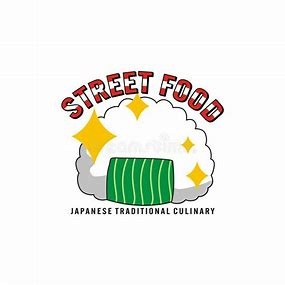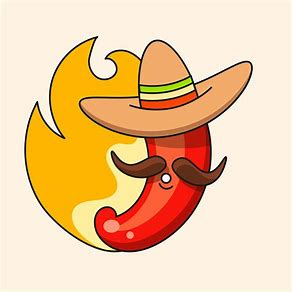PORTFOLIO -Creative Media Student
Welcome to my FMP Website.
This is where I talk about what I'm going to be doing as my final piece of work
RESEARCH
Asian History
Street food in Asia (specifically in China) dates back thousands of years and was typically sold to the poor residents but it has become a staple in the Chinese culture and continues to play a major role in Chinese cuisine because of the uniqueness in their presentation and colour scheme with very red and warm colours which brings a messages of acceptance and welcoming.
Not only did street food become popular in China and Japan but also Thailand where the natives didn't like the idea of street food until the early 1960's
Despite what you might think but Ramen is popular in Asian street food but it didn't originate in Japan. Ramen was originally brought to Japan by the Chinese about 100 years ago However, it soon became a "national dish" and even acquired regional variations.
Japan has innovative twists and adaptations have made vegan versions increasingly popular. Street food vendors now offer plant-based alternatives to classics like takoyaki, substituting octopus with ingredients like mushrooms or tofu, while still capturing the dish's beloved flavours and textures. Similarly, yakitori skewers feature grilled vegetables or tofu in place of meat, showcasing the adaptability of Japanese cuisine. The design of vegan Japanese street food remains rooted in precision and artistry, with vendors perfectly crafting each dish to highlight the natural flavours of plant-based ingredients.
I think this would be a great way for me to optimize my viewership as the brightness will stand out amongst other street food brands.
European History
Street food in Europe dates back to Ancient Greece where small fried fish was considered a street food and were generally consumed by the poorer people of Ancient Rome as they didn't have the basic essentials that they have today like ovens etc. These street foods weren't very different to China's original dishes as in Ancient Greece, Chickpea soup with bread and grain paste were common meals.
However, In Renaissance Turkey, The street food typically sold their was "fragrant bites of hot meat," which was a chicken and lamb that had been spit-roasted. Where street food was first standardized in Europe. Again, Turkey uses a very red and warm colour scheme.
In more recent history , street food vendors in Transylvania sold gingerbread nuts, cream mixed with corn, and bacon and other meat fried on top of ceramic vessels with hot coals inside, which in my opinion is very basic and not what I would class as street food, so I'm going to avoid the Transylvanian side of street food for the time being as what I'm creating is vegan.
South American History
In South America (specifically the Mexican side) street food wasn't as you would expect with its Asian counterparts.
They primarily use a combination of meats like turkey, rabbit, gopher, frog and fish as well as insects and stews.
The design of vegan Mexican street food is characterized by accessibility and convenience, with vendors crafting appetizing dishes from colourful stalls, carts, and makeshift kitchens. Bold spices, fresh produce, and inventive plant-based substitutes entice the taste buds, offering a cruelty-free alternative to traditional offerings. Whether it's the savoury aroma of grilled Portobello mushrooms or the crunch of crispy avocado tacos, vegan Mexican street food reflects the vibrant spirit of Mexican culture while embracing the principles of compassion and sustainability.
Mexico's traditional dressing is quite fascinating but also seems a little irregular from the casual dressing around the world, I'd say they go for a mix of formal and informal suites but steer more towards the informal side with their sombreros. Traditional men's clothing is a large blanket cape called a sarape. Boots are also a wardrobe staple. The charro suit, with its origins as the outfit worn by Mexican cowboys, is most associated with Mariachi musicians. The suit is also an acceptable substitute for a tuxedo at formal events in Mexico. The charro suit includes the sombrero, a wide-brimmed hat that provides plenty of shade.
Traditional Mexican clothing for women includes a sleeveless tunic-like dress called a huipil .Originally, these cotton dresses were made very simple with garnishes of colour. However, traditional Mexican women's clothing now regularly includes lots of ornate embroidery, often including images and patterns that have symbolic meaning attached to them.
The traditional colours of Mexico include vibrant reds, greens, yellows, and patterns such as those seen in Mexican textiles. Understanding the cultural significance of colours in Mexico provides insight into the country's vibrant heritage. Here's a concise overview of key colours and their meanings:
Red (Rojo)
Symbolism: Represents passion, love, vitality, and festivity.
Uses: Prominent in celebrations like Día de los Muertos and Independence Day.
Green (Verde)
Symbolism: Symbolizes nature, fertility, growth, hope, and renewal.
Uses: Reflects Mexico's lush landscapes and is important during spring and religious festivals.
White (Blanco)
Symbolism: Stands for purity, innocence, and spirituality.
Uses: Common in religious ceremonies, traditional clothing, and architecture.
Yellow (Amarillo)
Symbolism: Represents sunshine, happiness, and warmth.
Uses: Used in fiesta decorations to evoke joy and positivity.
Blue (Azul)
Symbolism: Reflects spirituality, tranquillity, and protection.
Uses: Found in traditional pottery and religious art.
Street and market food has had a significant impact on haute cuisine in Mexico, with upscale restaurants serving many of the same foods as in the streets, sometimes modified and sometimes not. It has influenced the United States, Street foods are easiest to find in the early morning and then the evening and late into the night. They are harder to find, outside Mexico City, in the mid-afternoon. The majority of the food is corn-based(Which is a perfect beginning for my meat free street food). It is also found at street markets called "mercado sobre ruedas" which translates to "Market on Wheels".
After the Spanish colonisation took over, they brought European food stocks like wheat, sugarcane and livestock to Peru. This would prove to make more options inside the street food "industry". However, this again doesn't match my theme of a vegan street food.
I did some researching into street food logo designs and below is a few that caught my eye:






Asian designs





Mexican Designs





I was thinking about doing something similar to these designs but to add my own vegan touch to them as none of them have anything to do with the vegetarian/vegan theme.
